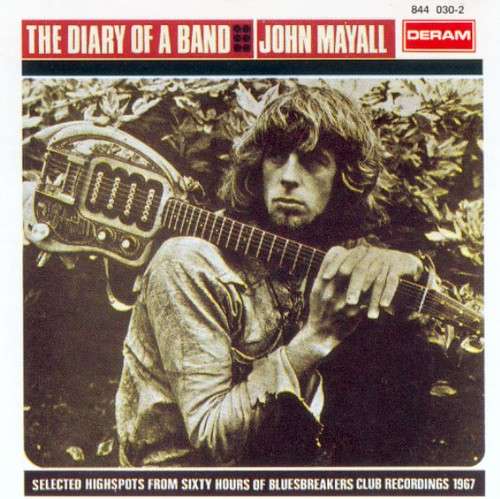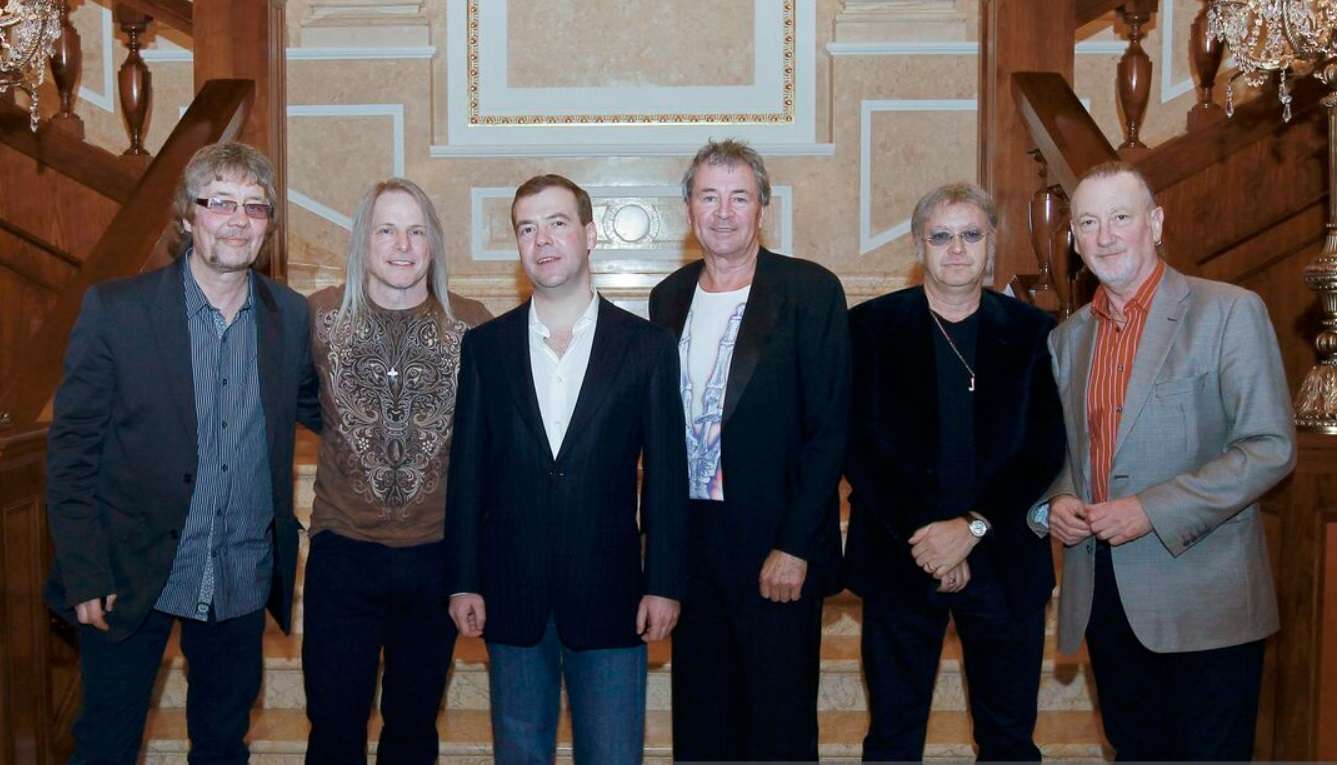Emerging in the heartland of the 1960s British Blues Boom, John Mayall and The Bluesbreakers made a lasting contribution to the music world that transcended their time. With Mayall’s musical roots intertwined with the origins of the band, it is no wonder they sculpted a distinct and charismatic sound. This English blues singer, songwriter, and multi-instrumentalist, together with his dynamic ensemble of musicians, pioneered a unique British blues style that carved a niche in the music landscape. As we delve into their legendary journey, from humble beginnings to game-changing albums and genially crafted tunes, the profound legacy and influence they cast on the intertwined narrative of rock and blues will become evident.
Origins and Formation of John Mayall and The Bluesbreakers
Early Years and Musical Influence
John Mayall was born on November 29, 1933, in the small town of Macclesfield in Cheshire, England. Despite his parents’ ardor for music, it wasn’t until his teenage years that Mayall began to cultivate an interest of his own. He was primarily self-taught and initially found affinity in the piano, but later expanded his skillset to include the guitar and harmonica. Mayall’s early influences were primarily jazz musicians, however, he was drawn particularly towards the raw and emotive nature of the blues, prominently the works of blues greats such as Muddy Waters and Sonny Boy Williamson.
Formation of The Bluesbreakers
In the 1960s, England experienced an explosion of blues music largely orchestrated by young musicians inspired by American blues artists. John Mayall, although older than many of his counterparts, was at the forefront of this surge, forming John Mayall & the Bluesbreakers in 1963. The band witnessed an ever-changing line-up over the years with a notable involvement of Eric Clapton, who took over as lead guitarist after the departure of Roger Dean. The band helped popularize blues music in the United Kingdom and laid the groundwork for British Blues. It was also through Mayall’s band that Eric Clapton achieved his initial success.
The Band’s Unique Style and Initial Entry into the Music Scene
The Bluesbreakers’ unique style stemmed largely from Mayall’s vision of a pure and uncompromised expression of the blues. This was clinched into rock arrangements and highlighted by Mayall’s vocals and mouth harp playing, as well as an impressive showcase of guitar artistry – initially by Eric Clapton, and subsequently by a series of virtuosic guitarists including Peter Green and Mick Taylor.
Their debut album, “John Mayall Plays John Mayall,” was recorded live in 1964 but it was the 1966 release, “Blues Breakers with Eric Clapton,” commonly referred to as the “Beano Album,” which flung the band into the spotlight. The album was instrumental in marrying British rock with American blues, helping to establish a distinctly British Blues sound, and serves as one of the landmark recordings of 60s British Blues movement.
The Significant Impact of John Mayall and The Bluesbreakers
For many decades, John Mayall and The Bluesbreakers have been an essential component of the music scene, with numerous iterations of the band marking different eras. Their longevity can be attributed to Mayall’s steadfast dedication to his musical vision and his constant drive for exploration and innovation. Not merely a band, they served as a musical proving ground for many artists, making a significant contribution to the development and evolution of blues music.
Major Albums and Musical Influence
The Inception of John Mayall and the Bluesbreakers
Following their formation in the 1960s, John Mayall and the Bluesbreakers were quickly recognized as the torchbearers for the true British blues sound. Fusing American blues styles, notably a potent mix of electrified Chicago blues and raw Delta blues, their music was instrumental in cementing their reputation as one of England’s most influential blues outfits.
The band’s initial significant impact was made with their debut album, “John Mayall Plays John Mayall,” a live recording from 1965 with the original band line-up: John Mayall himself, wearing multiple hats as vocalist, organist, and harmonica player; Roger Dean on guitar; John McVie holding down the bass; and Hughie Flint providing the drum beats. Recorded live at Klooks Kleek, a prestigious jazz club in London, the album served as a unique blend of both blues and jazz influences, which was representative of their early roots. Moreover, it established their tenor for future work by showcasing a bold energy and raw depth.
Blues Breakers with Eric Clapton
The significant turning point came with the release of “Blues Breakers with Eric Clapton” in 1966, their second studio album. Eric Clapton replaced Dean on lead guitar, proving to be a turning point in the band’s career. The album is widely regarded as one of the seminal blues records in the British blues boom of the 1960s, with Clapton’s powerful, driving solos helping to define the burgeoning genre. The album also marked a shift from the blues covers that they had played on their first album to writing original material, with Mayall penning the lion’s share of the songs.
A Hard Road and Further Evolution
The subsequent departure of Clapton paved the way for Peter Green, who led the band to produce “A Hard Road” in 1967. This album, distinct for the exemplary guitar work of Green and the ever-strong contribution from Mayall, solidified the band’s reputation as stalwarts of the British blues scene.
Experimentation became a part of the band’s identity as Mayall’s songwriting broadened to include elements of jazz and rock. However, the trademark sound of passionate blues remained a consistent thread woven through their discography.
Crusade and Bare Wires
The band experienced another line-up change ahead of their 1967 album, “Crusade.” Mick Taylor replaced Green, and the album presented a shift towards a blended sound featuring elements of rock ‘n’ roll and blues.
“Bare Wires,” released the following year, blurred genre boundaries even further. Categorized as a ‘blues-jazz’ record, it featured the Bluesbreakers’ most complex arrangements to date. The album is also notable for its length, comprising two sides of continuous music, an unconventional inclusion in the blues genre.
Recognized for significantly shaping the British blues music industry, John Mayall and the Bluesbreakers also nurtured the talents of rock icons such as Eric Clapton, Peter Green, and Mick Taylor. Garnering early success as part of the band, these musicians, along with Mayall’s creative insight, collectively molded the dynamic sound of the Bluesbreakers, ensuring a lasting legacy in the world of music.
Legacy and Impact on Contemporary Music
The Forerunners of British Blues
Established in 1963, John Mayall and the Bluesbreakers emerged as a progressive blues and rock band wielding notable influence during the blues resurgence of the ’60s. Often considered the spark igniting British blues, the band provided a solid foundation for musicians to delve into and innovate within the genre. An open-door policy regarding band membership ensured the red-carpet introduction of many rising stars such as Eric Clapton, Peter Green, and Mick Taylor.
Despite the band’s shifting line-up, the unwavering presence of band leader and versatile instrumentalist John Mayall ensured a consistent drive and direction. Mayall’s knack for spotting and fostering raw talent resulted in a band flush with gifted artists including John McVie and the aforementioned Clapton, Green, and Taylor. This influential group later represented the core of renowned rock bands like Cream, Fleetwood Mac, and The Rolling Stones.
The Blue Print for British Blues
Several of the Bluesbreakers’ albums, such as “John Mayall Plays John Mayall” and the legendary “Blues Breakers with Eric Clapton” (often referred to as the ‘Beano’ album due to Clapton reading the said comic on the cover), went on to become seminal in reshaping the course of blues music and have been a source of inspiration for countless musicians. It was those Bluesbreakers’ raw and vigorous performances of Chicago-style blues that influenced the next generation of musicians, and their sound later proliferated as ‘British blues’.
Their adaptation of the traditional twelve-bar blues style into a more amplified and modernized format was also innovative. This unconventional approach to blues music opened up the genre to a wider audience and inspired a new generation of musicians who would go on to develop unique styles of their own.
Harnessing the Power of Reformative Art
Throughout his five-decade long career, Mayall consciously utilized the Bluesbreakers as a platform for talented musicians and burgeoning stars. This had a significant impact on the music industry, with the Bluesbreakers acting as a stepping-stone towards stardom for numerous musicians.
A consequential result of this approach was the showcasing of a variety of musical styles within the blues genre. The contributions of future stars such as Eric Clapton, Mick Taylor, Jack Bruce, and Peter Green became significant elements to the Bluesbreakers’ soundscape, emphasizing the flexibility and adaptability of blues music.
A Lasting Legacy in Contemporary Music

With a career spanning over five decades and still active as of now, John Mayall and the Bluesbreakers have presented a long and cherished chronicle of blues music. They have left impressive footprints in British blues that have been followed by countless other musicians – from Fleetwood Mac with their unique blend of blues and rock, to Cream with their hard-hitting blues rock sound. This influence can even be seen in contemporary blues and rock musicians today.
In addition, the legacy of John Mayall and the Bluesbreakers lives on in the form of their recorded work. Their timeless compositions continue to be enjoyed by audiences and respected by musicians. Their music is a testament to the power and versatility of the blues, and serves as an enduring influence on contemporary music.
Furthermore, Mayall’s lifelong commitment to promoting new talents and his innovative approach to the genre has had a profound impact on the direction of blues and rock music. For many, John Mayall is not only a pioneer of British blues, but also a vital link to its roots and a developer of its future growth, thereby placing him permanently in the annals of music history.
Coming to the present era, the imprint of John Mayall and The Bluesbreakers resonates profoundly in contemporary blues and rock genres. The constellation of talent that passed through the doors of the Bluesbreakers encompasses a “Who’s Who” in the world of rock and blues, naming Eric Clapton, Peter Green, and Mick Taylor, to name a few. The band’s pervasive influence spread not only through their groundbreaking music but also in the irreplaceable role they played in nurturing the potential of these future stars. It’s clear that even after the final curtain call, the resonating guitar riffs and powerful narratives of this iconic band still vibrate on our turntables and in our hearts, making their legacy an indelible part of music history.
Writio.com: The Ultimate AI Content Writer! Generating high-quality, customizable articles for publishers, complete with relevant images. This article was written by Writio.









